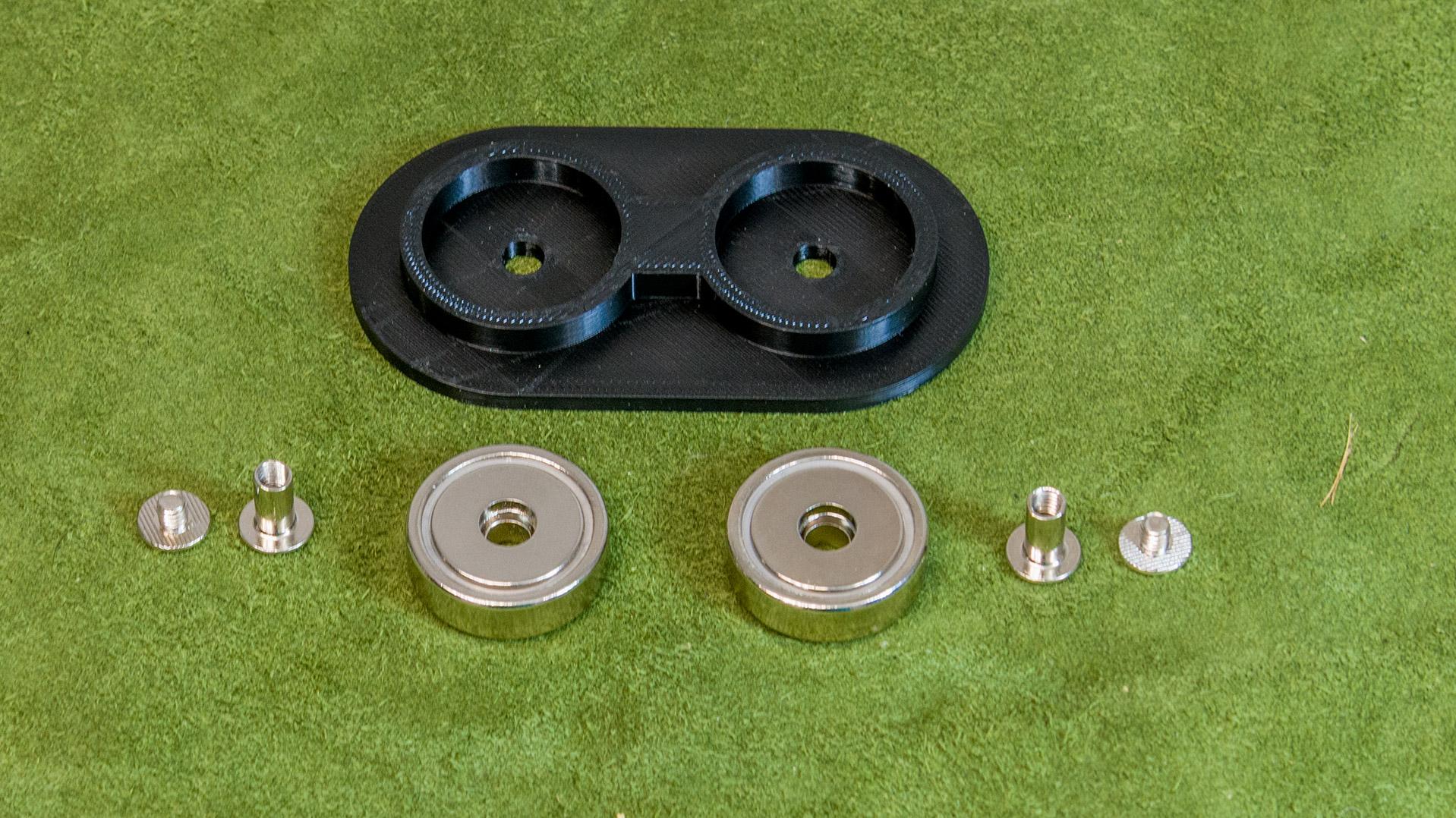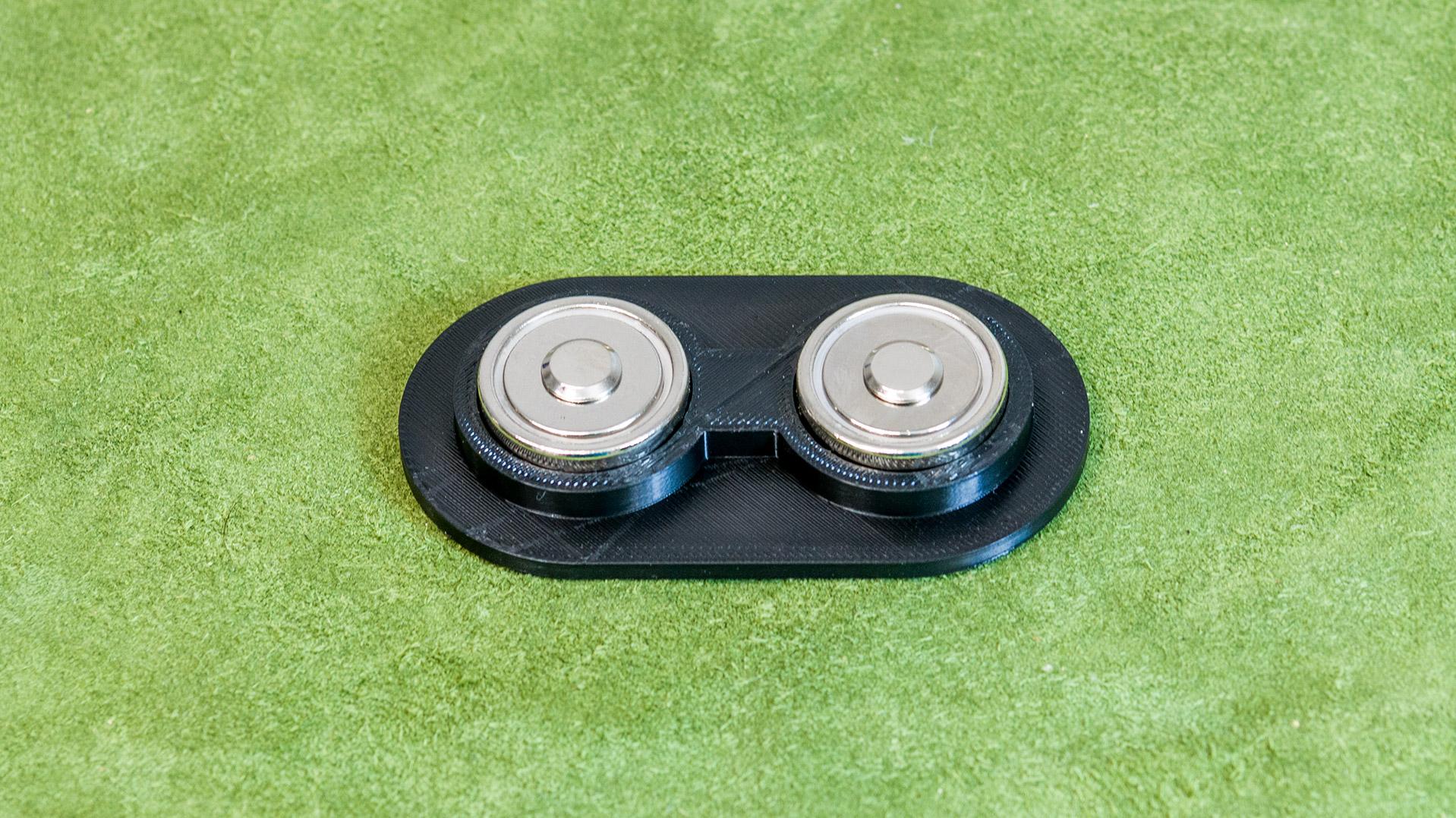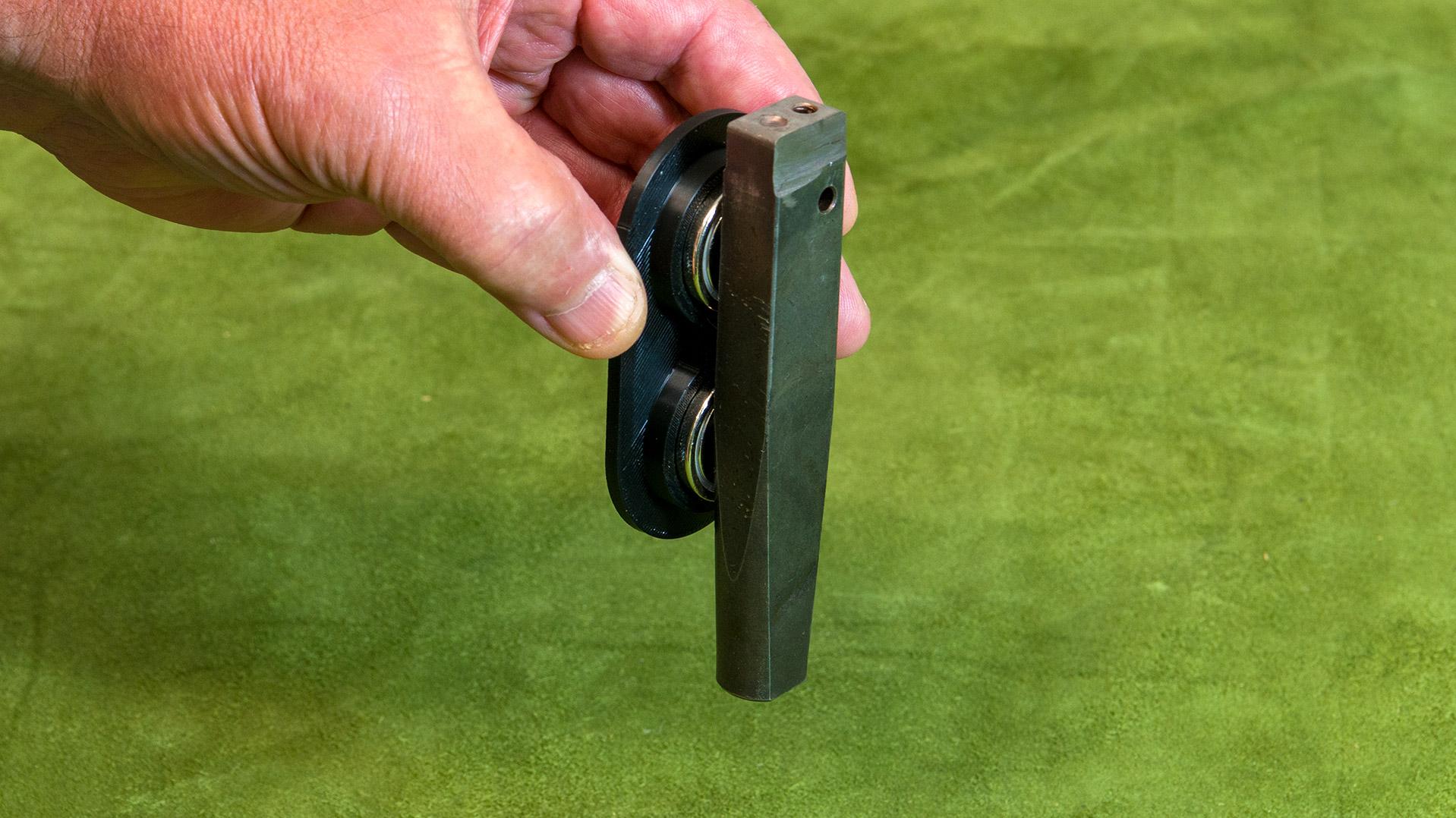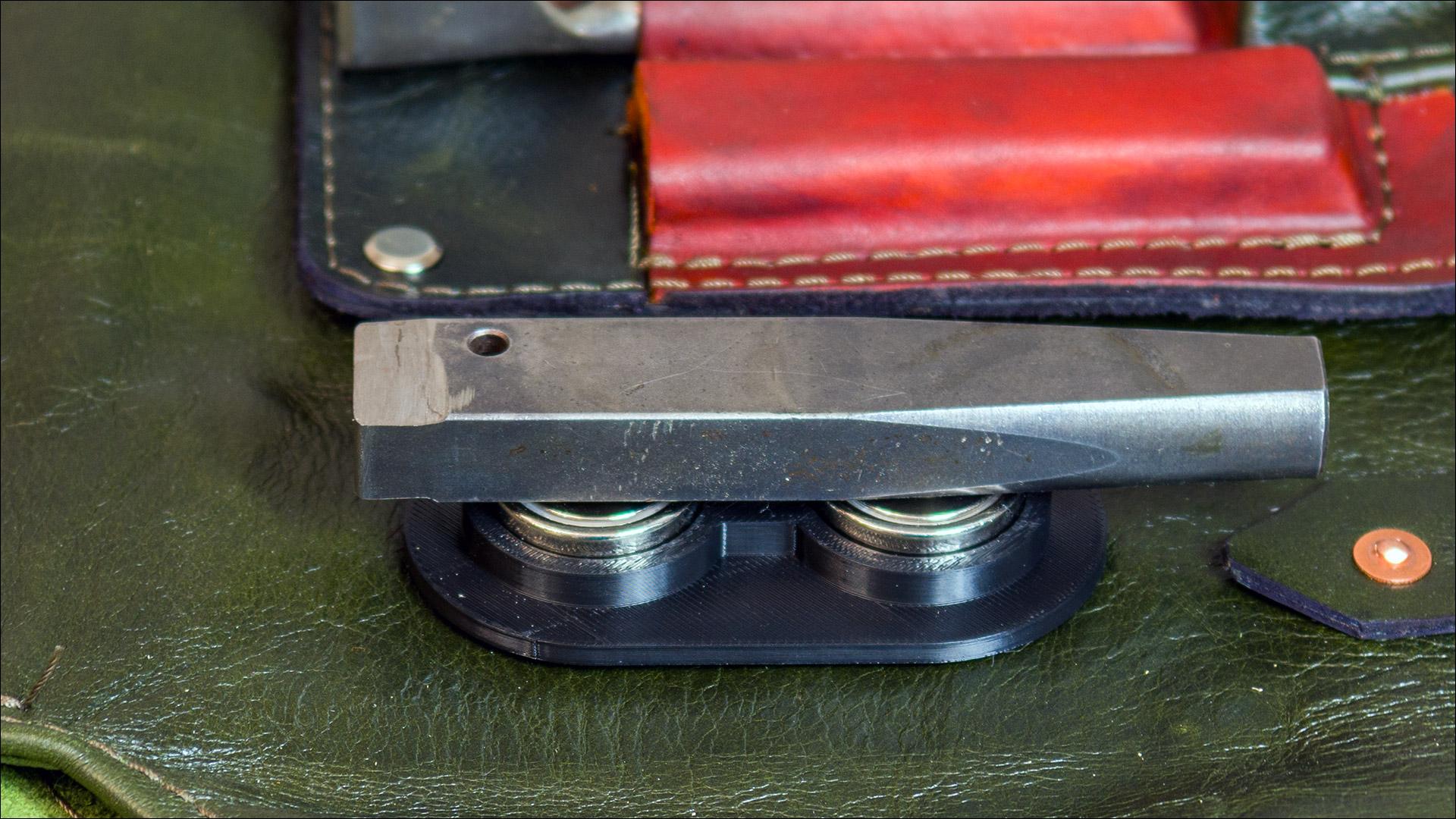
kgg
Contributing Member-
Posts
3,290 -
Joined
-
Last visited
Content Type
Profiles
Forums
Events
Blogs
Gallery
Everything posted by kgg
-
I agree. Personally I don't saddle stitch or otherwise hand stitch not because of funds but I just don't have the temperament. That for me was a major factor for not purchasing a one armed bandit (Tippmann Boss or Cowboy Outlaw). I just couldn't see myself pulling a lever for ever stitch let alone saddle stitching. kgg
-
True. I checked and searched the Organ website and couldn't find any info on the DP x 17D. I would drop them an email and ask for info. kgg
-
If you are fairly mechanically inclined it may work as long as you are aware of it's limitations and probably lack of product support. Definitely worth a look see. kgg
-
The photo of the Singer clone appears to be sorta kinda like the Singer 29K71 short arm, small bobbin, with side wheel. What is the asking price for this clone ( probably made in China). Info from this website: ( https://www.siruba.co.uk/Singer 29K Instructions.pdf ) MACHINE 29K71 (Was 29K53) End of cylinder bed is 1 inch wide and 7/8 inch deep. Space at right of need1e 12- 1/4 inches. Diameters of belt grooves 2-7/8 inches and 4-7/8 inches. MACHINE 29K72 End of cylinder bed is 1-5/32 inches wide and 1-1/16 inche5 deep. Space at right of needle 17-1/2 inches. Diameters of belt grooves 3-1/4 inches and 5.1/2 inches. Large Bobbin. MACHINE 29K73 End of cylinder bed is 1 inch wide and 7/8 inch deep. Space at right of needle 17-1/2 inches. Diameters of belt grooves 3-1/4 inches and 5-1/2 inches. kgg
-
Not really unless you dump the clutch like in a standard transmission truck. kgg
-
My Take: Speed reduction is like a double edged sword. If you use a speed reducer for just reducing the machines sewing speed no harm will come to your machines internals. If you want / need the increase in torque to punch through something because of the additional available torque that a speed reducer will deliver. You run the risk of damaging / twisting internal parts that are not designed to take that load. The better option is then to invest in a different / better machine that is designed to handle that type of work. My attitude has always been if I need to use a speed reducer for additional torque benefits I am using the wrong machine. kgg
-
I would suggest a long arm in a used machine Singer 29k-72 or 73 the only difference being the end of the cylinder bed are slightly different. As for new there are to many clones available so just go with who gives the best price and after support. You might also want to contact the person who just up and quit and see what equipment they have that maybe for sale. @Wizcrafts should be able to provide good sound guidance. kgg
-
Very nicely done. kgg
-
As a note some people did converted their machines from 134-35 needle system to the 135 needle system. If the previous owner did the conversion then for leather you would need 135 X 16 X (correct needle size) and for fabric 135 X 17 X (correct needle size). What I have found is using a leather point needle will give a cleaner needle hole in vinyl then a fabric needle. Fabric needles are meant to separate the fibres of the material rather then cut them. Really depends on what size of thread you are planning on using and the needle system it is setup for. Your machine can accept up to V138 thread. The 190-22 if I'm not mistaken is a system 190 needle used on the older PFAFF 145 so what they are suggesting is a #22 needle which is good for V92 thread. kgg
-
New Tool Idea - Large Leather Shears - Should I make these for sale?
kgg replied to Stagesmith's topic in Leather Tools
Yes we do. Yes I known what you mean. The only "good" thing is when using one if you cut yourself you feel it before you see the blood. I almost never carry a pocket knife even through the son buys really good ones and then sharpens them so they are as sharp as a razor. You see the blood dripping on the floor before you feel the cut. Ask me how I know. I must as a giggle try using one to cut leather. kgg -
New Tool Idea - Large Leather Shears - Should I make these for sale?
kgg replied to Stagesmith's topic in Leather Tools
You are right cutting tools is pretty vast. I have a fairly expensive brand name round knife which rarely gets used, maybe once in the last year. What do you mean --- $7 utility knife? I typically splurge and use the $1.25 CAD ones from the dollar store that come with a spare blade for cutting. If I'm cutting chrome tan probably 3 or 4 oz I use a electric fabric rotary cutter. Cutting heavy fabric or leather with a pair of scissors for me would be a no go no matter how good they are, old hands. kgg -
I forgot to ask if you could provide a photo of how you have your top threaded. kgg
-
I think some of your problem is you are using Tex 270 (V277) which the machine is not rated for. The 341 / 1341 clones of the Juki LS 341 or 1341 are rated for a #24 needle which will accept Tex 210 (V207) but the machines typically will only sew that in thinner material. A lot of clone machines rate their machines on the max size thread you can stuff through the eye of the needle vs Juki rates their machine on what it can sew with the max size top thread and bobbin thread in max. sewing thickness. That is why you see the Juki LS-341 or 1341 rated for V138 thread not V207. Insert bobbin in the top cap and through the tension spring so the bobbin spins counter clockwise when you pull on the end of the bobbin thread. I leave about 4 to 6 inches of end thread dangling. Place the bobbin and cap in the palm of your left hand. With your right hand grab the end of the bobbin thread and lift the bobbin case of your hand. If there isn't enough tension the bobbin will just spin in your hand and probably fall to the floor. You should be able to lift the bobbin and case off your hand otherwise you have to tighten the little screw by turning it clockwise about 1/8 of a turn. You do not want to flat that little spring or unscrew the screw to much as if the screw comes out chances are you will never find it. Try again. When you get the tension just about right you should be able to lift it off your hand. Once you can lift the bobbin off your hand try giving the end of the thread a couple of quick jerks it should cause the bobbin to spin slightly and yet be lifted off your hand. kgg
-
@Cihowe I would do the drop test for tension on the bobbin thread. If it needs to be adjusted turn the tension spring screw a 1/8 of turn at a go. If you over tighten that screw it will flatten the bobbin thread tension spring and you will have to replace the spring. Once those have been over tighten they are never right afterwards and you will never get consistent bobbin tension. kgg
-
To many unknowns to start with. i) what model of sewing machine are you using?? ii) what thread size are you using?? iii) what size of needle are you using?? iv) is the machine threaded correctly??? Need photo's showing thread from spool to the eye of needle?? v) Did you do a drop test or use some other method of setting the bobbin tension???? My take: When you make a circle type seam manually without using a circle guide the sewing speed and controlled movements both have to be properly matched. Particularly with drop feed machines there can be a tendency to twist / turn / move the material to quickly. With drop feed and walking foot machines there is definitely points in the sewing cycle where there is no downward pressure on the material. If you move the material at one of those points you can drag up from the bobbin extra thread and get poor stitches. Those poor stitches do not necessarily appear at that stitch point but in the following stitches because there is so much slop / extra thread in the bobbin thread which then can become a self compounding issue. My observation: At your starting point of the seam you did not lock your stitches and the knot / loop is visible. The knot / loop should be buried in the leather which usually indicates a tension problem. If you don't lock your stitch it will cause a tension issue. Typically 3 stitches (4 holes) forward and then reverse back through those holes and then do your seam. Another method is start your seam the distance 4 holes in would be and reverse back 3 stitches then forward. The second method reduces the amount of thread in each hole by 1/3. kgg
-
I agree with @DieselTech talk to someone that does basic machinist work and have a couple adapters made. Pretty simple stuff. Also get them to make an adapter with 8mm internal threads in the top adapter so you even use the inexpensive dies that the Chinese type presses use like punches, etc. kgg
-
I think that would be the best way and maybe add a couple more to give it a little extra character. kgg
-
I do like your idea of modifying a motor to give you what you would like particularly if you have a motor on hand. I modified what is called a variable speed buffer to do sanding and burnishing. I would be interested in seeing your end result.
-
Typical gc2605 conversion to non-binding machine
kgg replied to TakashiOkada's topic in Leather Sewing Machines
If to changed what appears to be a clutch motor on the used machine out for a servo motor which should cost about $200 the total cost would be about $600. That is of course assuming the used machine is in good working order and mechanically fit. If the machine does the stuff you would like to do then you would have saved $1300 which would go a long ways to other things like needles, thread, attachment, leather, etc. kgg -
SunStar KM-380 BL-B cylinder arm consistently leaking oil
kgg replied to Esket's topic in Leather Sewing Machines
The Sunstar KM-380 BL-B can take a max needle size of a #23 needle which basically means you can use a max size thread of V138 ( Tex 135, M20 ) thread in thinner leather. Here is a link to the machines specifications. ( https://www.manualslib.com/manual/970676/Sunstar-Km-380bl.html?page=8#manual ) Here is a link for thread to needle size: ( https://www.tolindsewmach.com/thread-chart.html ) kgg- 12 replies
-
- cylinder arm
- sunstar
-
(and 3 more)
Tagged with:
-
@Sblof Just to add to @Wizcrafts info the 135 x 16 needles would be for leather and the 135 x 17 would be used for fabric. An example would be for using V138 thread sewing leather you would need to use 135 X 16 X (size of needle) so you would need 135 X 16 X #23 or #24 depending on the thickness and toughness of the leather. Here is a good chart for selecting needle size for thread size: ( https://www.tolindsewmach.com/thread-chart.html ) kgg
-
Personally I think what factors that are contributing / causing you to breaking the needles are: 1) Needle size: a 160 (#23) needle is meant for V138 thread in thinner leather. i) On a straight run a 160 (#23) needle may work as there is just enough room in the needle hole to allow for the 3 threads in the hole (1 for the top thread, two for the loop). ii) On a turn there isn't enough slop in the needle hole to allow the twisting movement and the bending on the needle. iii) When you are finishing off by reversing into the same last couple of holes you now have 3 stitches that are all ready in the needle hole and you want to add 3 more. In thin items this may not be as much of a problem but in 8mm (5/16") it probably will be ending with cutting the thread or broken needles. 2) Friction on the needle. i)When the hole isn't big enough, diameter wise, there is friction being created by the threads grabbing the walls of the thread and pulling on the needle. As the thickness and toughness increases so does the friction. ii) This friction will increase ever so slightly with darker coloured thread. iii) If you are using a edge guide the leather will not move sideways but when free handing you are going to add an additional twisting / bending moment on the needle. iv) Also when using a cylinder arm machine you get additional twisting and bending as the item moves farther back as most times the item wants to move to the left. Also unless you are using a flat bed table attachment the item will want to droop down once it doesn't have any support from the needle plate. Probably will be ending with a broken needle. Suggestion: i) Change needle to a 180 (#24) and see if that works. ii) change thread size to V207 and use a 200 (#25) needle. iii) Add a flatbed table top attachment. kgg
-
I typically use one of two rivet setters a brand name ( Weaver ) and unknown brand ( Chinese ). What sparked this topic was when adding a magnetic holder to my new leather apron to hold small items I noticed the Weaver would hold while the Chinese one wouldn't and would have to be placed back into the tool holder. Here is my comparison: 1) Weaver #12 Heritage Rivet and Burr Setter ( https://www.weaverleathersupply.com/products/heritage-rivet-burr-setters?srsltid=AfmBOorZa03-7yJXd4NK0J7ms-NhaPObUqG9y6-cYWW633ChiNRKtNjq ): i) colour: gun barrel black, ii) length: 112 mm ( 4.4" ) iii) weight: 198 grams (6.9 oz) iv) Construction: Ferromagnetic metal (holds to a magnet) v) Country of Manufacture: Unknown. On a brief search I was unable to determine if it was made in the USA. Cost: $36 CAD ($26 USD) per size plus shipping 2) Chinese Not Branded #12 Rivet and Burr Setter ( https://www.temu.com/goods.html?_bg_fs=1&goods_id=601101822896581&_oak_stage=6&_oak_page_source=703&_x_vst_scene=adg&_x_ads_sub_channel=shopping&_x_ns_prz_type=-1&_x_ns_sku_id=17592387188379&_x_ns_gid=601099558219698&_x_ads_channel=google&_x_gmc_account=695390730&_x_login_type=Google&_x_ads_account=6910707695&_x_ads_set=21445371984&_x_ads_id=163985514426&_x_ads_creative_id=705187068636&_x_ns_source=g&_x_ns_gclid=EAIaIQobChMIh8-XxtqJiAMVckp_AB0yLi9TEAQYBiABEgKM5PD_BwE&_x_ns_placement=&_x_ns_match_type=&_x_ns_ad_position=&_x_ns_product_id=17592387188379&_x_ns_target=&_x_ns_devicemodel=&_x_ns_wbraid=Cj8KCQjwoJa2BhC-ARIuAK-YPyAPBRiMisytKWY4gCe42YwLmzWGnnz3z3Cv-X8BXZO0JO9OMpk78c8fmBoC3BY&_x_ns_gbraid=0AAAAAo4mICGOP3XszhHdJ9mfoJkEYI7ia&_x_ns_targetid=pla-2322529874778&_x_sessn_id=m1vl5lgo1t&refer_page_name=goods&refer_page_id=10032_1752786185211_my3616b3n9&refer_page_sn=10032 ): i) colour: Shinny Chrome ii) length: 112 mm ( 4.65" ) iii) weight: 193 grams ( 6.8 oz) iv) Construction: Non Ferromagnetic metal (will not hold to a magnet at room temperature) v) Country of Manufacture: Unknown, probably China Cost: Budget friendly from Temu at $12.24 CAD ($8.90 USD) for two setters a #9 & a #12 free shipping Conclusion: Both rivet setters: i) Do the job very well and have installed many a copper rivet and burr. ii) Hold up very well to being stuck with regular metal hammers. I'm not particular on what I use to strike them using a 10 oz, 16 oz or a 22 oz regular hammer whatever is the closest at hand. iii) The doming of the copper rivet over the burr is consistently good. What do you use???????? kgg
-
The question you need to answer is what you want to sew. With such old machines certain parts can be difficult or impossible to get. The clutch motor presently on the machine should be replaced with a servo motor to get your sewing speed to a comfortable level which will cost about an additional $200. Learning to use a clutch motor can have a very steep learning curve, sort of like learning how to drive a car with a stick shift. Since your bio you mentioned wallets a flatbed machine would be a better choice then a cylinder arm. When you add in the cost of new servo motor cost would be about $1400. A new flatbed clone of the Juki DNU-1541S a Cowboy CB-1541S will cost $1600 plus shipping. Personally I would go with a new machine particularly if this is your first machine. kgg
-
Keep in mind no one machine will do everything. That is why a lot of use have more then one class of machine. If you are going to specialize in that type of work by the proper machine as indicated by @Wizcrafts and @mbnaegle. If you want to do flat work (wallets, belts) buy a flatbed, if you are going to do circular items get a cylinder arm machine. As a note you can sorta kinda turn a cylinder arm machine into flatbed by installing a flatbed table top attachment. If you want to use thread above V207 get a class 441 cylinder arm machine (manual or motorized). Buy Once, Cry Once kgg





